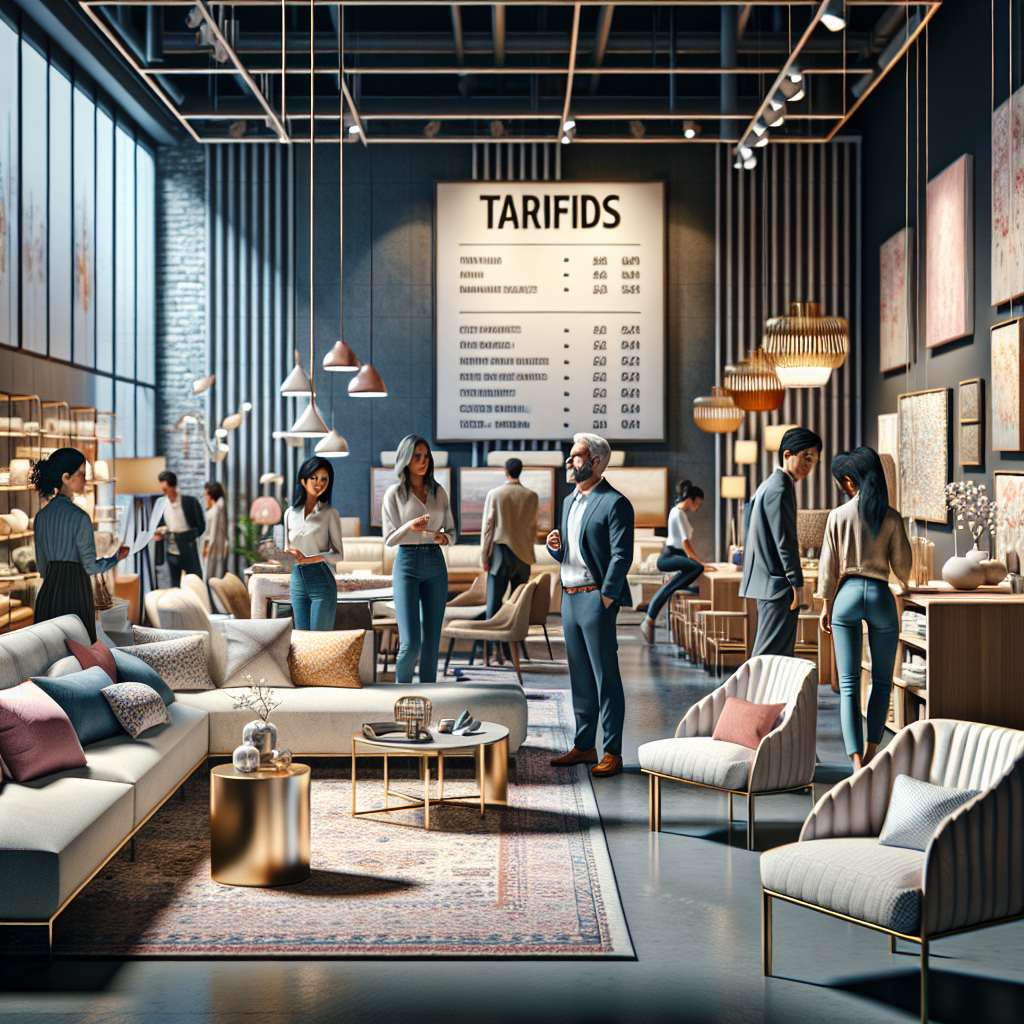Wayfair CEO Says Tariffs Have Yet to Impact Shopper Behavior
In the dynamic landscape of retail, where consumer behavior can shift dramatically due to external factors, Wayfair’s CEO has made a noteworthy assertion. Despite the looming presence of tariffs that have affected various sectors, Wayfair has reported that these economic changes have yet to significantly influence shopper habits. This observation is particularly relevant given the increasing scrutiny on how tariffs impact the retail industry, especially for e-commerce giants like Wayfair.
Throughout 2023, the retail sector has faced a multitude of challenges, from inflation to supply chain disruptions. Tariffs, imposed on imported goods, were expected to serve as a catalyst for change in consumer spending. However, Wayfair’s CEO emphasized that aside from a “short-lived” pull forward of certain purchases, the home goods retailer has not observed any substantial alterations in customer behavior. This statement raises questions about the resilience of consumer spending in the face of economic pressures.
One of the key factors contributing to Wayfair’s stability is its expansive product range and competitive pricing strategy. By offering a vast selection of furniture and home goods, Wayfair caters to a diverse audience. This adaptability allows the company to mitigate potential losses from tariffs, as customers still find value in the products available. Furthermore, Wayfair has effectively utilized its digital platform to enhance the shopping experience, making it convenient for consumers to browse and purchase items from the comfort of their homes.
The notion of a “pull forward” in purchases refers to the phenomenon where consumers buy items in advance due to anticipated price increases or shortages. In this case, some shoppers may have made purchases before tariffs drove prices higher. However, the CEO’s comment suggests that this spike in purchasing was temporary, indicating that shoppers are not fundamentally changing their buying patterns in light of tariff-related costs.
This observation is supported by recent industry reports that show a consistent demand for home goods, despite economic fluctuations. The National Retail Federation (NRF) reported that home improvement and furnishings have remained a strong segment, with consumers prioritizing their living spaces. This trend is particularly evident as people increasingly invest in their homes, a behavior that has been amplified by the pandemic and the shift towards remote work.
Moreover, Wayfair’s marketing strategies have also played a crucial role in maintaining customer interest. By leveraging data analytics, the company tailors its advertising efforts to resonate with specific consumer demographics. This targeted approach not only enhances customer engagement but also drives sales, allowing the retailer to weather potential downturns caused by external economic factors.
Another aspect worth noting is the growing importance of sustainability in consumer purchasing decisions. As shoppers become more environmentally conscious, companies that align with this value are more likely to retain customer loyalty. Wayfair has taken steps to incorporate sustainable practices into its operations, which may further shield it from the adverse effects of tariffs. By promoting eco-friendly products and practices, Wayfair attracts a segment of consumers who prioritize sustainability, thereby diversifying its customer base.
However, it is essential to consider the potential long-term implications of tariffs on the retail sector. While Wayfair may currently be thriving, the ongoing economic landscape remains uncertain. As tariffs persist, companies may face increased costs that could ultimately be passed on to consumers. Should prices rise significantly, it may lead to a shift in purchasing behavior, as shoppers become more price-sensitive.
In conclusion, Wayfair’s assertion that tariffs have yet to impact shopper behavior underscores the retailer’s resilience in a challenging economic environment. The company’s diverse product offerings, effective marketing strategies, and focus on sustainability all contribute to its ability to maintain customer loyalty. While the future remains uncertain, Wayfair’s current performance suggests that it is well-positioned to navigate the complexities of a shifting retail landscape. As retailers continue to adapt to external pressures, the insights from Wayfair’s experience may serve as a guiding light for others in the industry.
retail, Wayfair, tariffs, consumer behavior, e-commerce
